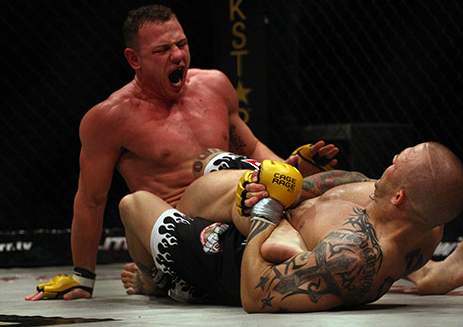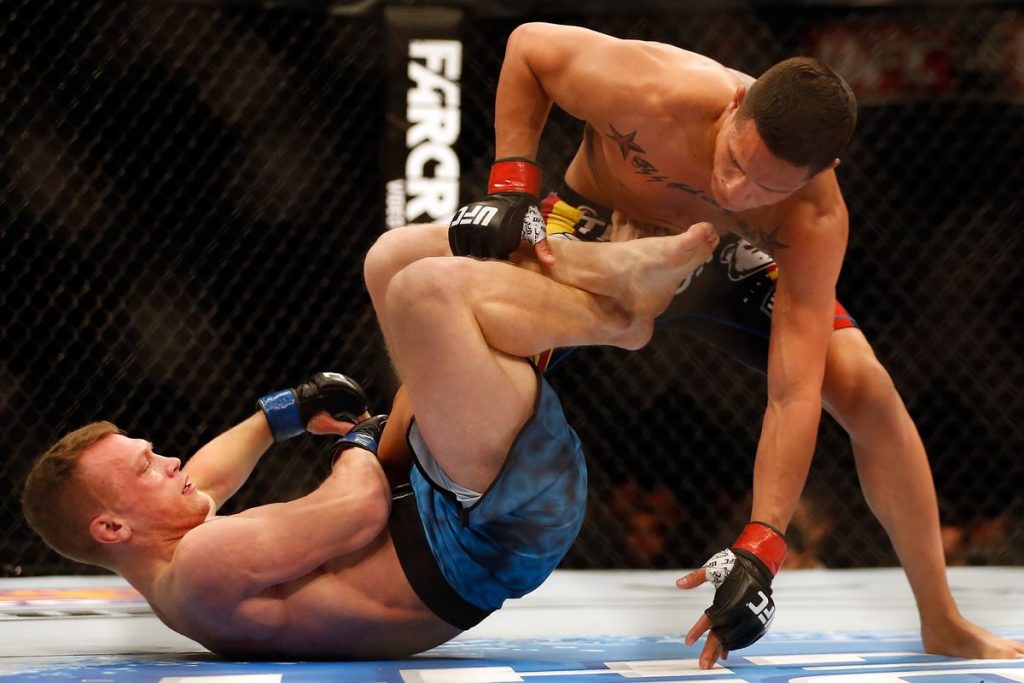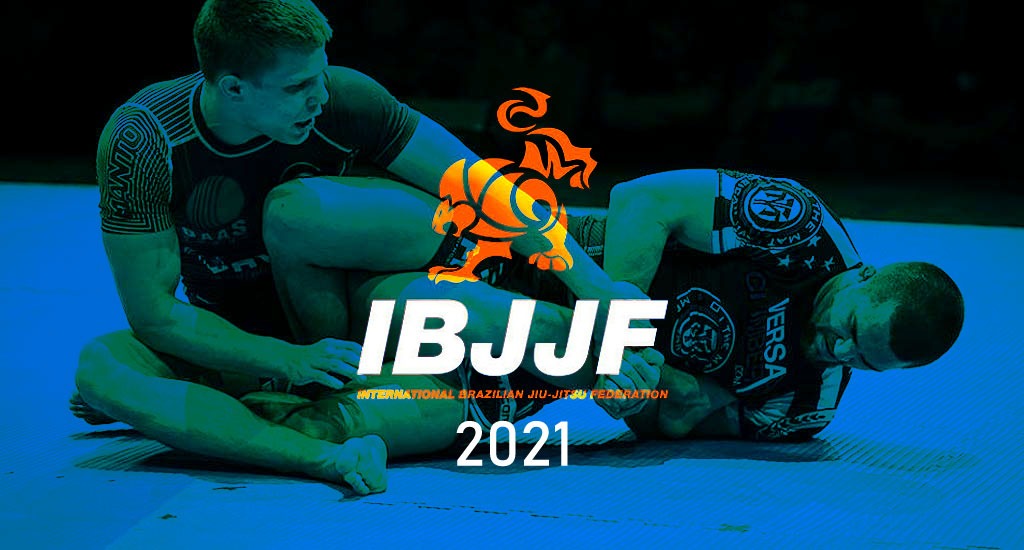
The IBJJF (International Jiu-Jitsu Federation) confirmed that Heel hooks and reaping will be allowed for brown and black belts from 2021. This news was announced this week during Pan IBJJF Jiu-Jitsu Championship 2020 and it’s confirmed by Flograppling. This latest change in IBJJF heel hooks rules is one that people in the grappling community have been requesting for ages. It is most definitely a welcome change, but what will it mean for Brazilian Jiu-Jitsu?
The IBJJF heel hooks rules are a source of unparalleled debate in the grappling world. On one side you have the hardcore fans of the current state of Brazilian Jiu-Jitsu, given that the IBJJF is the largest organization that puts together tournaments on a world scale. On the other side are the people that enjoy a “different brand” of Jiu-Jitsu, More Leg lock originated and focusing on No-Gi (although that’s not always the case). finally, it seems that everyone will be able to find an IBJJF tournament they enjoy, and won’t have to change their grappling game because of it.
The IBJJF Heel Hooks And Reaping Rules…So Far
At present, the IBJJF heel hooks rules are simple – NO heel hooks at any belt level, Gi or No-Gi. The notion behind this was that heel hooks are too dangerous to be practiced safely, and that went on for decades, since the formation of the IBJJF. As it turns out, even though that might’ve been the case before, heel hooks are no more dangerous than armlocks or chokes.

Knee raps, on the other side, have always been a different kind of restriction. The no-knee reap rule is dumb at best, given that there’s simply no way to injure a knee just by having your shin run across it, from the outside in. In fact, the IBJJF heel hooks, and knee raps rule change will actually help improve the open guards game along with opening up lots of leg locking opportunities. Both rule changes are extremely welcome and definitely a step forward… or so it seems.
The Announcement That Stunned The BJJ World
A couple of days ago the news emerged that the IBJJF will allow heel hooks and knee raps from 2021. Personally, I had to check the date of the announcement, as it seemed like the perfect April fools day prank. It took a while for the fact that this is a real thing to sink in. And when it did I was immensely happy.

The IBJJF heel hooks and knee reaps rules statement encountered positive reactions from the BJJ world or most of it. There are those that would love to keep training using the old-school ways, given that some gyms haven’t opened up to using heel hooks and knee reaps yet. However, it is definitely a step forward for global Jiu-Jitsu and the evolution of the sport.
What Can We Expect?
This is the big question, isn’t it? After the initial excitement at the IBJJF heel hooks and knee reaps rule change subsides, common sense kicks in, with a healthy dose of skepticism. I might be mistaken, and certainly, hope so, but this might just turn out to be a ploy that proves that these moves are too dangerous to use. Those of us that have been using them for years know it isn’t so, but letting people who have rudimentary training at best try and use, or worse, defend heel hooks at the highest levels might just be that nail in the coffin the IBJJF are looking for.

All In All
Most of us roll and mess around with heel hooks anyway. Knee reaps are even more of a thing that happens even involuntary, during such of modern guard play. So, why shouldn’t we be able to sue them in competition? I certainly hope the IBJJF heel hooks and knee reaps rule will open to purple belts as well in the near future, and hopefully all competitors in the future. For now, I know that I’m really excited to take this latest rule change out for a ride, whenever I get the chance to compete next.
Start learning Heel Hooks and Leg Locks with Fanatics.


![Darce Choke Encyclopedia – Origins, Mechanics and Variations [2024] BJJ, choke, Brabo, BJJ Darce Choke, D'arce Choke, Darce BJJ Choke](https://bjj-world.com/wp-content/uploads/2017/11/JungPoirierLeeYahoo-218x150.jpg)









![Wristlocks From The Top Pete Letsos DVD Review [2025] Wristlocks From The Top Pete Letsos DVD Review](https://bjj-world.com/wp-content/uploads/2025/01/wristlocks-from-the-top-pete-letsos-dvd-review-218x150.png)
![The Closed Guard Malachy Friedman BJJ DVD Review [2025] The Closed Guard Malachy Friedman BJJ DVD Review](https://bjj-world.com/wp-content/uploads/2025/01/closed-guard-malachy-friedman-bjj-dvd-review-218x150.png)

![10th Planet Leg Locks Jeremiah Vance DVD Review [2025] 10th Planet Leg Locks Jeremiah Vance DVD Review](https://bjj-world.com/wp-content/uploads/2025/01/10th-planet-leg-locks-jeremiah-vance-dvd-review-218x150.png)
![The Bear Trap Nicolas Renier DVD Review [2025] The Bear Trap Nicolas Renier DVD Review](https://bjj-world.com/wp-content/uploads/2025/01/the-bear-trap-nicolas-renier-dvd-review-218x150.png)


![Back Hacks Yigit Haney BJJ DVD Review [2025] Back Hacks Yigit Haney BJJ DVD Review](https://bjj-world.com/wp-content/uploads/2024/12/back-hacks-yigit-haney-bjj-dvd-review-100x70.png)

![Slip N Slide Into Victory Julián Espinosa DVD Review [2025] Slip N Slide Into Victory Julián Espinosa DVD Review](https://bjj-world.com/wp-content/uploads/2025/01/slip-n-slide-into-victory-julian-espinosa-dvd-review-100x70.png)
![Jeff Higgs Self Defense Guard BJJ DVD Review [2024] Jeff Higgs Self Defense Guard BJJ DVD Review](https://bjj-world.com/wp-content/uploads/2024/09/jeff-higgs-self-defense-guard-bjj-dvd-review-100x70.png)
![Efficiently Executing X-Guard Giancarlo Bodoni DVD Review [2024] Efficiently Executing X-Guard Giancarlo Bodoni DVD Review](https://bjj-world.com/wp-content/uploads/2024/09/efficiently-executing-x-guard-giancarlo-bodoni-dvd-REVIEW-100x70.png)
![360 Degrees Guard Retention Thiago Abud DVD Review [2024] 360 Degrees Guard Retention Thiago Abud DVD Review](https://bjj-world.com/wp-content/uploads/2024/10/360-degrees-guard-retention-thiago-abud-dvd-review-100x70.png)


![Darces From Everywhere Kade and Tye Ruotolo DVD Review [2024] Darces From Everywhere Kade and Tye Ruotolo DVD Review](https://bjj-world.com/wp-content/uploads/2024/10/darces-from-everywhere-kade-and-tye-ruotolo-dvd-cover-100x70.png)



![Double Sleeve Guard Jon Thomas BJJ DVD Review [2024] Double Sleeve Guard Jon Thomas BJJ DVD Review](https://bjj-world.com/wp-content/uploads/2024/10/double-sleeve-guard-jon-thomas-bjj-dvd-review-100x70.png)











![Henry Akins Black Hole No-Gi Closed Guard DVD Review [2024] Henry Akins Black Hole No-Gi Closed Guard DVD Review](https://bjj-world.com/wp-content/uploads/2024/09/henry-akins-black-hole-no-gi-closed-guard-dvd-review-100x70.png)
![Foot Sweep the World Dainis Nguyen-Huu DVD Review [2024] Foot Sweep the World Dainis Nguyen-Huu DVD Review](https://bjj-world.com/wp-content/uploads/2024/11/foot-sweep-the-world-dainis-nguyen-huu-dvd-review-100x70.png)

![Tiny Woman Guide To The Guard Ann Kneib DVD Review [2024] Tiny Woman Guide To The Guard Ann Kneib DVD Review](https://bjj-world.com/wp-content/uploads/2024/11/tiny-woman-guide-to-the-guard-ann-kneib-dvd-review-100x70.png)